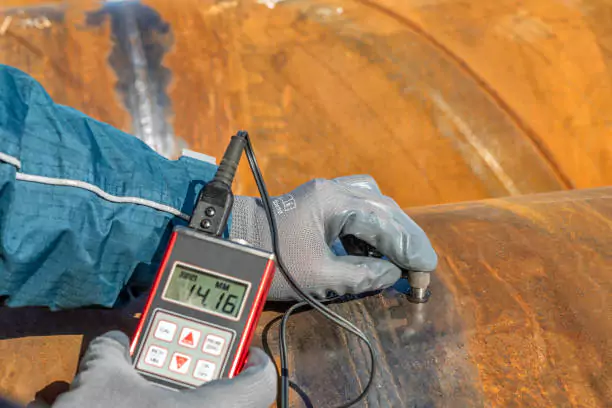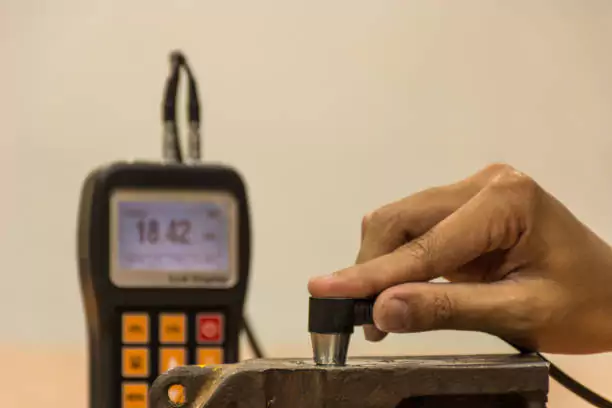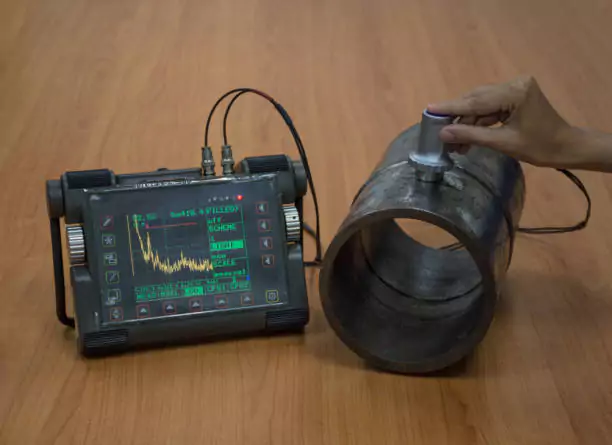Understanding Surface Roughness and Its Importance
Measuring Surface Roughness: Overview and Importance
Surface roughness is a parameter that represents the texture of a surface at a microscopic scale. It is characterized by the vertical deviations of the real surface from its ideal form. If these deviations are significant, the surface is considered rough; if they are small, the surface is smooth. Measuring surface roughness is crucial in various industries as it influences the mechanical properties and behavior of materials and components. This includes friction, wear, lubrication, light reflection, and even aesthetic quality.
The importance of accurately gauging surface roughness cannot be overstated. Precise measurements ensure the functionality and longevity of mechanical components, electronics, and biomedical implants. They help in quality control, ensuring that products meet the required specifications and standards. Additionally, a properly measured surface finish can significantly reduce manufacturing costs by minimizing waste and rework.
Surface Roughness and Its Impact
Surface roughness significantly impacts the performance and behavior of materials and components. High surface roughness can lead to increased friction and wear, which might compromise the efficiency and lifespan of mechanical parts. In applications like aerospace and automotive engineering, surface roughness can affect aerodynamics and fuel efficiency. In electronics, a rough surface might impede proper contacts and connections, thereby impacting performance. For biomedical implants, surface roughness can influence osseointegration and biocompatibility, hence affecting the implant’s success and longevity.
Surface roughness also plays a pivotal role in determining the aesthetic quality of a material. For example, in decorative finishes, a smoother surface is usually preferred. Therefore, understanding and controlling surface roughness is fundamental across various industries to improve product performance, durability, and appearance.
Factors Influencing Surface Roughness
Several factors can affect surface roughness, and they fall broadly into three categories: material factors, process factors, and environmental factors.
Material Factors
The inherent properties of the materials being used can impact surface roughness. Softer materials might deform more easily, leading to a rougher surface, while harder materials might resist surface deformation, resulting in a smoother finish. Material inhomogeneity and grain size also play a significant role in determining the surface texture. For instance, materials with larger grain sizes might exhibit irregularities that contribute to increased surface roughness.
Process Factors
The manufacturing process used to create the surface is another significant factor. Techniques such as grinding, turning, and milling can produce different surface textures. Parameters like feed rate, cutting speed, and tool geometry directly influence the resulting surface roughness. For example, higher feed rates might lead to increased roughness due to the larger uncut chip sections. Similarly, worn-out tools can generate rougher surfaces because they do not cut the material as cleanly as new tools would.
Environmental Factors
Environmental conditions during manufacturing can also affect surface roughness. Temperature fluctuations, humidity, and contamination are some of the factors that need to be controlled. High temperatures can cause thermal expansion or contraction, thereby increasing surface roughness. Similarly, high humidity might lead to oxidation, which can deteriorate the surface finish. Contamination from dust or other particles can result in surface imperfections.
The Critical Role of Measuring Surface Roughness
Mechanical Components
In the realm of mechanical components, surface roughness measurements are integral for ensuring parts fit together correctly and operate smoothly. High friction surfaces could lead to excessive wear and tear, reducing the mechanical integrity and operational lifespan of the components. Accurate surface roughness measurements help in predicting wear, optimizing lubrication, and ensuring efficient energy use, thereby enhancing the overall reliability and efficiency of mechanical systems.
Electronics
For electronics, surface roughness affects the quality of connections and the performance of microelectronic components. Rough surfaces can lead to poor electrical contacts, increasing resistance and potentially leading to overheating or failure. In the semiconductor industry, surface roughness on wafers can affect photolithography processes, impacting the accuracy of circuit patterns. Precise measurement and control of surface roughness are therefore critical to maintaining the reliability and functionality of electronic devices.
Biomedical Implants
In biomedical implants, surface roughness can influence how well the implant integrates with the surrounding biological tissue—a process known as osseointegration. Implants with an optimal roughness are more likely to achieve firm attachment, reducing the risk of loosening and failure. Measuring surface roughness ensures that implants are produced to specification, enhancing their performance and longevity. It also helps in tailoring surface finishes that are conducive to biological compatibility and patient safety.
In-Depth Methods of Measuring Surface Roughness
Contact Methods
Contact methods involve physical contact between a measurement device and the surface being measured. One widely used contact method is Stylus Profilometry.
Stylus Profilometry
In stylus profilometry, a diamond-tipped stylus is drawn over the surface, and the vertical movements of the stylus are recorded to produce a surface profile. This method is beneficial for its accuracy and ability to measure a wide range of surface textures. The stylus can detect minute asperities and valleys, offering a detailed profile of the surface roughness. However, it is also time-consuming and can potentially damage very delicate surfaces. Despite these drawbacks, stylus profilometry remains a popular choice for precise surface roughness measurement, particularly in controlled laboratory environments.
In-Depth Methods of Measuring Surface Roughness
Non-Contact Methods
Non-contact methods utilize laser or optical systems to measure surface roughness without physically touching the surface. This approach eliminates the risk of damaging delicate surfaces and allows for faster measurements.
Optical Profilometry
Optical profilometry involves the use of optical interferometry to measure surface roughness. A beam of light is split into two parts: one reflecting off the surface being measured, and the other from a reference plane. When the beams recombine, the differences in their path lengths create interference patterns that can be analyzed to determine surface height variations. Optical profilometry is advantageous because it provides high-resolution measurements quickly and is suitable for a wide range of materials, including those that are difficult to measure using contact methods.
Atomic Force Microscopy (AFM)
Atomic Force Microscopy (AFM) is another advanced non-contact method used to measure surface roughness at the nanometer scale. AFM uses a cantilever with a sharp tip to scan the surface. As the tip moves over the surface, it experiences forces that cause the cantilever to deflect. These deflections are recorded and translated into a precise 3D surface map. AFM offers extremely high resolution and can measure surfaces down to atomic layers. However, it is generally confined to small surface areas and requires a controlled environment to operate accurately.
Key Surface Roughness Parameters
Understanding the various parameters used to quantify surface roughness is essential for interpreting measurement data accurately. These parameters are typically categorized into Profile Parameters (2D Measurements) and Areal Parameters (3D Measurements).
Profile Parameters (2D Measurements)
Profile parameters measure the roughness of a line profile across the surface.
Ra (Arithmetic Average Roughness)
Ra is the arithmetic average of the absolute values of the surface height deviations measured from the mean line. It is one of the most commonly used parameters in surface roughness measurement due to its simplicity and ease of calculation. Ra provides an average roughness level but does not reflect the peaks and valleys’ individual characteristics.
Rq, Rv, Rp, Rz, Rsk
- Rq (Root Mean Square Roughness): Rq is the square root of the arithmetic mean of the squared values of the surface height deviations. It is more sensitive to outliers than Ra, making it more indicative of surface peaks and valleys.
- Rv (Max Valley Depth) and Rp (Max Peak Height): These parameters represent the maximum depth of the valleys and the height of the peaks from the mean line, respectively. They are crucial for understanding the extreme points of surface roughness.
- Rz (Average Maximum Height of the Profile): Rz averages the height of the five highest peaks and the lowest valleys over the assessment length. It gives a more comprehensive understanding of surface texture extremes than individual peak and valley measurements.
- Rsk (Skewness): Rsk measures the symmetry of the surface deviations about the mean line. It indicates whether the surface has more peaks or valleys, affecting its interaction with other surfaces.
Areal Parameters (3D Measurements)
Areal parameters provide a more complete representation by considering the roughness over a surface area rather than along a single line.
Sa (Arithmetic Mean Height)
Sa is the arithmetic mean of the absolute height values within the defined area. It is the 3D equivalent of the 2D Ra parameter and provides a general measure of surface roughness over the area.
Sq, Sv, Sp, Sz, Ssk
- Sq (Root Mean Square Height): Similar to Rq, Sq is the root mean square of the surface heights over the defined area, making it sensitive to outlier points like peaks and valleys.
- Sv (Maximum Valley Depth) and Sp (Maximum Peak Height): These parameters measure the largest valley depth and peak height, respectively, within the defined area.
- Sz (Ten-Point Height): Sz measures the average height difference between the five highest peaks and the five lowest valleys within the defined area, analogous to Rz in 2D measurements.
- Ssk (Skewness): Ssk in 3D measurements indicates the asymmetry of the height distribution, showing whether the surface stands predominantly peaked or with deep valleys.
Challenges in Measuring Surface Roughness
Accurately measuring surface roughness comes with its set of challenges, because real-world surfaces are incredibly diverse and complex.
Variability of Real-World Surfaces
Real-world surfaces often exhibit considerable variability due to differences in material properties, manufacturing processes, and environmental conditions. This variability makes it difficult to standardize measurements and reconcile differences between theoretical models and actual measurements. The presence of dirt, oil, or other contaminants can further complicate the measurements, introducing noise and inaccuracies.
Measurement Method Limitations
Each measurement method has its limitations. Contact methods like stylus profilometry can be slow and potentially damaging to delicate surfaces. Meanwhile, non-contact methods can be expensive and may require sophisticated equipment and controlled environments. Additionally, non-contact methods might struggle with surfaces that reflect or absorb light irregularly.
Interpretation of Measurements
Interpreting surface roughness measurements is not always straightforward. Different industries and applications may prioritize different roughness parameters, leading to potentially conflicting interpretations. Moreover, the most appropriate roughness parameter may vary depending on the specific usage or performance criteria of a component. Hence, understanding which parameter to use and how to interpret it in the context of the application is crucial but challenging.
Data Management
Surface roughness measurement generates large volumes of data that require effective management for analysis and decision-making. Storing, retrieving, and analyzing this data can be cumbersome, especially when dealing with large quantities of high-resolution measurements. Modern manufacturing systems often rely on digital databases and software solutions to handle this data effectively, but these systems come with their own set of challenges related to cost, complexity, and security.
FAQs on Surface Roughness Measurement
What is surface roughness?
Surface roughness is a measure of the texture of a surface, quantified by the vertical deviations of the actual surface from its ideal form. It reflects the presence of peaks and valleys on a surface at a microscopic level. Understanding surface roughness is crucial for various engineering and manufacturing applications as it directly influences material behavior, mechanical properties, and overall performance.
How is it measured?
Surface roughness can be measured using both contact and non-contact methods. Contact methods involve physically scanning a surface with a stylus, such as in stylus profilometry, while non-contact methods use optical or laser-based systems like optical profilometry and atomic force microscopy (AFM). Each method has its advantages and limitations, making the choice of method dependent on the specific requirements of the application.
What are surface roughness parameters?
Surface roughness parameters are the specific metrics used to quantify the roughness of a surface. They are divided into profile parameters (2D measurements) like Ra, Rq, and Rz, and areal parameters (3D measurements) like Sa, Sq, and Sz. These parameters provide different perspectives on surface texture, from average roughness values to peak and valley measurements, and even the asymmetry of the surface features.
Challenges in measurement?
Challenges in measuring surface roughness include dealing with the variability of real-world surfaces, limitations of the measurement methods, complexity in interpreting the measurements, and managing the large volumes of data generated. Accurately capturing and interpreting these measurements is often complicated by factors like material properties, manufacturing processes, and environmental conditions.
Importance of measurement?
Measuring surface roughness is crucial for ensuring the performance, reliability, and longevity of various products and components across multiple industries. Accurate measurement helps in quality control, optimizing manufacturing processes, and improving the overall functionality of products. It is particularly important in fields like aerospace, electronics, and biomedical engineering, where precise surface characteristics can significantly impact the efficiency and effectiveness of the final product.
In conclusion, understanding surface roughness and its measurement involves a comprehensive exploration of various methods, parameters, and challenges. It is a critical aspect of quality control and performance optimization in numerous industries, from mechanical engineering to electronics and biomedical applications. By mastering the techniques and parameters involved in surface roughness measurement, industries can ensure better product quality, reduce manufacturing costs, and enhance overall efficiency.



